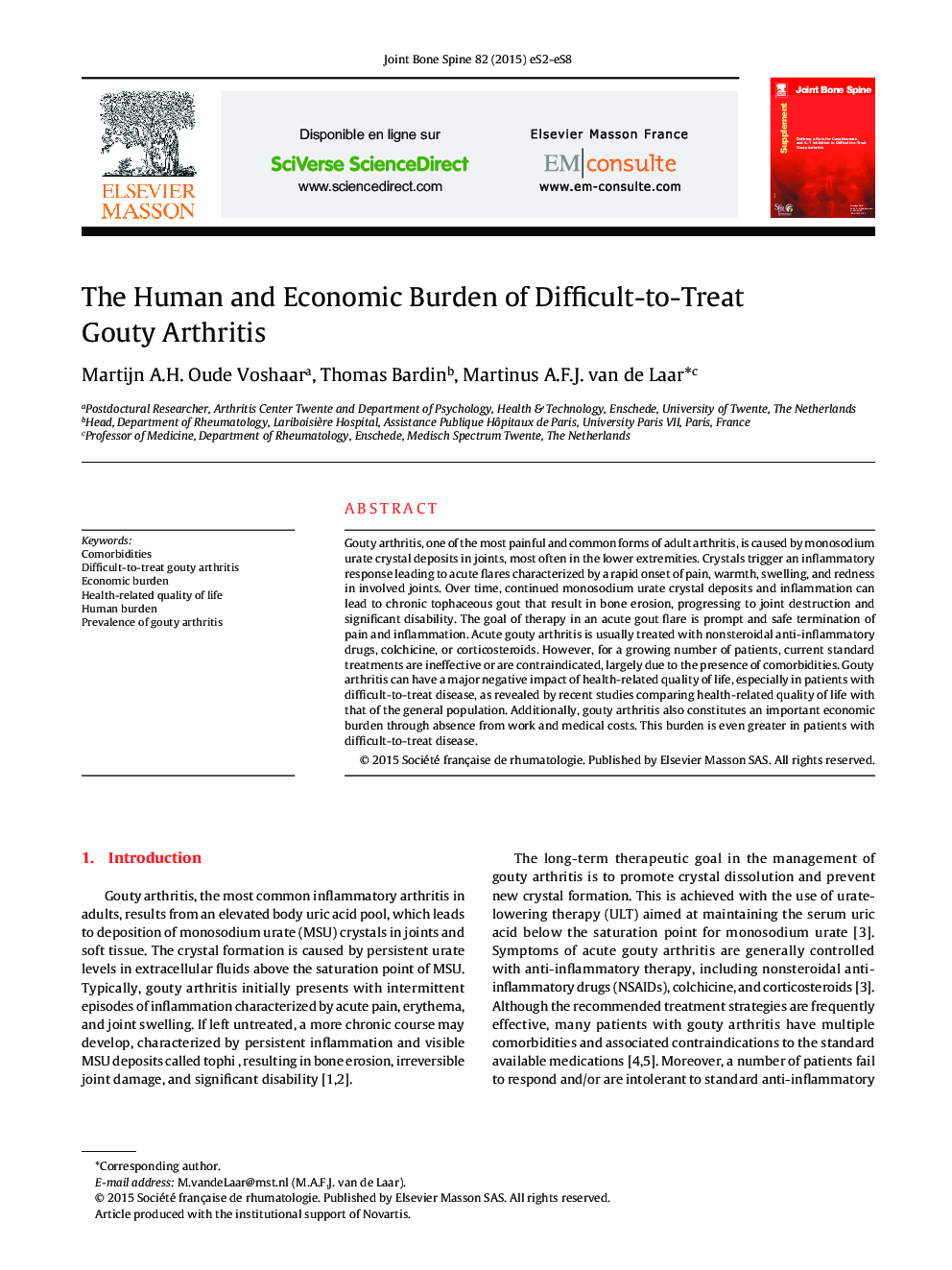| Article ID | Journal | Published Year | Pages | File Type |
|---|---|---|---|---|
| 3365677 | Joint Bone Spine | 2015 | 7 Pages |
Gouty arthritis, one of the most painful and common forms of adult arthritis, is caused by monosodium urate crystal deposits in joints, most often in the lower extremities. Crystals trigger an inflammatory response leading to acute flares characterized by a rapid onset of pain, warmth, swelling, and redness in involved joints. Over time, continued monosodium urate crystal deposits and inflammation can lead to chronic tophaceous gout that result in bone erosion, progressing to joint destruction and significant disability. The goal of therapy in an acute gout flare is prompt and safe termination of pain and inflammation. Acute gouty arthritis is usually treated with nonsteroidal anti-inflammatory drugs, colchicine, or corticosteroids. However, for a growing number of patients, current standard treatments are ineffective or are contraindicated, largely due to the presence of comorbidities. Gouty arthritis can have a major negative impact of health-related quality of life, especially in patients with difficult-to-treat disease, as revealed by recent studies comparing health-related quality of life with that of the general population. Additionally, gouty arthritis also constitutes an important economic burden through absence from work and medical costs. This burden is even greater in patients with difficult-to-treat disease.
